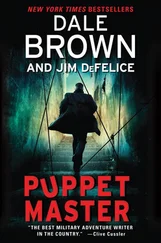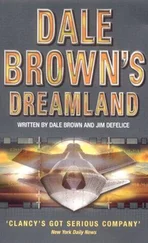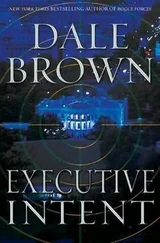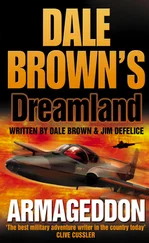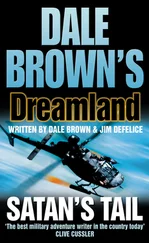Dale Brown - Sky Masters
Здесь есть возможность читать онлайн «Dale Brown - Sky Masters» весь текст электронной книги совершенно бесплатно (целиком полную версию без сокращений). В некоторых случаях можно слушать аудио, скачать через торрент в формате fb2 и присутствует краткое содержание. Жанр: Старинная литература, на английском языке. Описание произведения, (предисловие) а так же отзывы посетителей доступны на портале библиотеки ЛибКат.
- Название:Sky Masters
- Автор:
- Жанр:
- Год:неизвестен
- ISBN:нет данных
- Рейтинг книги:4 / 5. Голосов: 1
-
Избранное:Добавить в избранное
- Отзывы:
-
Ваша оценка:
- 80
- 1
- 2
- 3
- 4
- 5
Sky Masters: краткое содержание, описание и аннотация
Предлагаем к чтению аннотацию, описание, краткое содержание или предисловие (зависит от того, что написал сам автор книги «Sky Masters»). Если вы не нашли необходимую информацию о книге — напишите в комментариях, мы постараемся отыскать её.
Sky Masters — читать онлайн бесплатно полную книгу (весь текст) целиком
Ниже представлен текст книги, разбитый по страницам. Система сохранения места последней прочитанной страницы, позволяет с удобством читать онлайн бесплатно книгу «Sky Masters», без необходимости каждый раз заново искать на чём Вы остановились. Поставьте закладку, и сможете в любой момент перейти на страницу, на которой закончили чтение.
Интервал:
Закладка:
“Amen, ” Patrick said. “The smell really gets you after a while. I started to have… bad dreams.” He wasn’t going to say what those dreams were like or what mission he was flying in his dreams. He got the same dreams every time he was exposed to kerosene-like fumes-a morning long ago and far away… a tiny snow-covered fighter base at Anadyr, Siberia, in the Soviet Union, when he pumped thousands of gallons of kerosene into a B-52 by hand in subzero weather so they could take off again before the Soviet Army found them. David Luger had sacrificed himself to make sure they could escape, driving a fuel truck into a machine gun emplacement-and Patrick relived that horrible moment every night after smelling jet-fuel fumes. He would probably do so for the rest of his life. Henry Cobb hadn’t heard all the stories about the Old Dog mission-he had of course met all the survivors of that mission, most of whom worked-some called it “exiled”-at the HAWC, and he had seen the first Megafortress itself after Ormack and McLanahan flew it from Alaska back to Dreamland-but he could guess that it was some event in that mission that starred in McLanahan’s bad dreams. Both men quickly washed up in the lavatory down the hall, then returned to their rooms to dress. Despite the warm, muggy afternoon, they donned thin, fire-resistant long underwear and thick padded socks under their flight suits. Under the long underwear were regular cotton briefs and T-shirts. They wore metal military dog tags next to their skin so they wouldn’t rattle or fly loose during ejection. Many crew members laced dog tags into their boots as well, because many times lower body parts survived aerial combat better than upper body parts. They both carried survival knives in ankle sheaths, lightweight composite-bladed knives with both straight and serrated edges, a built-in magnetic compass in the butt cap, and a watertight compartment in the handle that carried waterproof matches, fishing line, sunscreen, a small signal mirror, and a tiny first-aid and survival booklet. In thigh pockets they carried another knife, this one attached to their flight suits by a six-foot-long cord-this knife was a legal switchblade knife with a hook blade for cutting parachute risers. The thigh pocket also contained a vial with earplugs, which were often mistaken by curious nonflyers for suicide pills. They carried no wallets, at least not the same ones they carried normally. Into a specially prepared nylon “sortie” wal- let they placed their military identification cards, some cash, credit cards, and traveler’s checks-these were many times more valuable than the “blood chits” used to buy assistance during earlier wars. During the intelligence briefing before a mission, they would receive “pointee-talkee” native language cards and small escape.and-evasion maps of the area, which both went into the sortie wallet. Just about every pocket in a flight suit contained something, usually personal survival items devised after years of experience. In his ankle pockets, Patrick carried fireproof Nomex flying gloves, extra pencils, and a large plastic Ziplok bag containing a hip flask filled with water and a small vial with water purification tablets. Cobb took a small Bible, a flask of some unidentifiable liquid, and included an unusual multipurpose tool that fit neatly inside his sortie wallet. They packed up their charts, flight manuals, and other documents in a Nomex flying bag, picked up a lightweight nylon flying jacket-which had its own assortment of survival articles in its pocketsand departed. While they were up on the upper-floor “catwalk” in the hangar, they had a good opportunity to look at the EB-52C escort bomber that was in the hangar with their B-2. Unlike the B-2, where there was little activity, the technicians and munitions maintenance crews were swarming around the Megafortress like worker bees in a hive. It had to be the weirdest plane-and the most deadly looking plane-either of them had ever seen. The long, sleek, pointed nose was canted down in taxi position, with the aerodynamically raked windscreens looking Oriental and menacing. The dorsal SAR synthetic aperture radar radome, which ran from just aft of the crew compartment and ended in a neat fairing that blended back into the fuselage and the diagonal stabilators near the aft end, made the Megafortress seem broad-shouldered and evil, like some warlock’s hunchbacked assistant. The pointed aerodynamic tip tanks, two on each wingtip, looked like twin stilettos challenging all corners, like lowered lances held by charging knights on horseback. Short low-drag pylons mounted between the inboard engine nacelles and the ebony fuselage on each side held six AIM-I 20 Scorpion air-to-air missiles, their red ground-safety streamers still visible. Faired under the wings were sensor pods that contained laser target designators, infrared scanners, telescopic cameras for long-range air-target identification, and millimeter-wave radars to scan for large metallic objects hidden by trees or fog that normally could not be picked up by other sensors, such as tanks and armored vehicles. This was one of the older Megafortress escort bombers-it still had the older, conventional metal wings that drooped so far down that the wingtips were only a few feet above the ground and had to be supported by pogo wheels. The new Megafortress wings were made of composite materials and wouldn’t sag one inch, even fully loaded with fuel and weapons. Other weapons were just being uploaded, and Henry Cobb, who had had little experience with the Megafortress project, could only shake his head in amazement. The forward section of the bomb bay contained two four-round clip-in racks that held AGM-136 TACIT RAINBOW antiradar cruise missiles. The aft bomb bay contained a Common Strategy Rotary Launcher filled with smooth, oblong-bodied missiles-eight TV-guided AGM-84E SLAMs, or Standoff Land Attack Missiles. “Looks like the Megafortresses are getting loaded for bear, ” Cobb remarked. They could also see the loading procedures for the Stinger airmine rockets in the tail launcher. Watching this Megafortress getting ready for combat made McLanahan feel strange-a crashing wave of deja vu was descending on him. The hangar in a remote location, the weapons loaded and ready, the plane fueled and ready to go-it was horribly like the last time he had taken a B-52 into combat all those years ago. But that wasn’t his bird now. He had a new one, a bigger, darker, more lethal one-the B-2 Black Knight, modified like the EB-52 to be a strategic escort bomber. All of the B-2’s weapons were internal, and the sophisticated sensors were buried within the wing leading edges or in the sensor bay in the nose under the crew compartment. The reconnaissance pods were gone, to be replaced by rotary launchers that would carry much more lethal warloads than cameras and radars. The B-2’s ground crew had just arrived for the pre-takeoff inspection, and since the two crewmen were awake at least an hour before they intended, they had time to look over their Black Knight before reporting to the briefing room. They found little changed. The maintenance crews were going through a normal pre-flight as if the plane were going on another training sortie-they were less than four hours from takeoff and no weapons had been uploaded yet. “Where are the missiles?” Cobb asked McLanahan. “I thought we were loading up on Harpoons or SLAMs for this run. “Won’t know what we’ll be doing for at least another two hours yet, ” Patrick replied. “We don’t know yet if we’re going after ships, or radars, or ground targets-it could be anything. Once the Joint Battle Staff decides, it’ll take them just a few minutes to snap those launchers and bomb racks in and do a ground check. They can probably do it while other planes are launching.” They completed a casual walkaround inspection, chatting with the maintenance crews along the way. It was apparent that each and every one of them was just as apprehensive, just as nervous, just as concerned for what was happening on Andersen Air Force Base and in the rest of the Pacific as Cobb and McLanahan. One of the munitions maintenance men stopped inspecting a SLAM missile seeker head when McLanahan greeted him. “Think we’ll be flying tonight, sir?” the man asked. The “we” was not just a demonstrative-ground crews were just as emotionally and professionally tied to their aircraft as the flight crews. When McLanahan’s B-2 rolled down the runway, a hundred other minds and hearts were right in there with him. “Wish I could tell you, Paul, ” Patrick said. “They tell us to be ready, that’s all.” The man stepped closer to McLanahan, as if afraid to ask the question that had obviously been nagging at his consciousness: “Are you scared, sir?” he asked in a low voice. Patrick looked back at the man with a touch of astonishment at the question. Before he could reply, however, some other technician had pulled the man away. “That’s McLanahan, you butthead. He’s the best there is, ” Patrick heard the second tech tell him. “He’s too good to get scared.” None of the other crew chiefs dared to speak with the two aviators. Cobb and McLanahan finished their inspection, checked in with the security guard, who inspected their bags before allowing them to leave, and then the two B-2 crew members stepped out of the hangar into the twilight. Unlike the controlled, calm tension inside hangar 509, outside it was sheer bedlam. The ramp space in front of the hangars was the only clear space as far as either man could see-the rest of the base was filled with aircraft of every possible description, and the access roads and taxiways were clogged with maintenance and support vehicles. The north ramp to their far right was choked full of cargo aircraft-C-141 Starlifters, C-5 Galaxys, and C-130 Hercules planes, all surrounded by cargo-handling equipment offloading their precious pallets of spare parts, personnel, weapons, and other supplies. Like a line of ants along a crack in a sidewalk, there was a steady stream of forklift trucks, tractor-trailers, flatbed trucks, and “mules” carrying supplies from the aircraft to the inspection and distribution warehouses. Every few minutes, another cargo plane would arrive on one of the Andersen AFB’s twin parallel runways, taxi off to a waiting area, then be met by a “Follow-Me” truck which would direct it to another parking spot. Empty cargo planes that had crews with duty day hours remaining went to a refueling pit on the south side of the base and were immediately marshaled to the end of the runway for takeoff; planes that were not due to take off until later were directed to waiting areas along the northeast side of the base, at the edge of the steep cliffs of Pati Point. West of the north ramp, near the north end of the east runway, were the parking spots for the aerial refueling tankers. These were perhaps the most important aircraft on Guam. The KC-135 Stratotanker, KC-10 Extender, and KC-130 Hercules tankers provided the only means for most of the Air Battle Force’s aircraft to conduct strike operations from Guam-indeed, most of the aircraft there could not have arrived without the tankers supplying them fuel. Tankers were airborne almost continually in support of flight operations, and several tankers were on “strip alert” status to respond to emergency requests of fuel. The tankers also acted as cargo aircraft themselves-one KC-10 tanker could deploy all of the support personnel, equipment, and spare parts for six F-16 fighters from Hawaii to Guam, and refuel those six planes, all on the same trip. Directly ahead of the hangars were the parking spots for the air-defense fighters. Only half of the Air Battle Force’s twenty F- 155 and fifteen F- 1 6s were parked there, because the rest were either flying escort missions with the “ferret” bombers or were on air-defense alert on the south parking apron. Four F-15s and six F-16s were fueled, armed, and ready to respond should the Chinese attempt an air raid on Andersen Air Force Base itself. The complement included four F-23 Advance Tactical Fighters, deployed for the first time out of the fifty states. A few of the F- 145 stranded from the stricken aircraft carrier USS Ranger were also parked there. Each fighter carried relatively few weapons, only two radar guided and two heat-seeking missiles total: the most prominent store on each fighter was the huge seven-hundred-gallon centerline fuel tank. When flying from Guam, where alternate landing bases were hundreds of miles apart, fuel was a very precious commodity. The incredible offensive power of these fighters was severely limited by fuel availability-if one aerial refueling tanker failed to launch or could not transfer fuel, it could take dozens of fighters out of the battle. Cobb and McLanahan waited near a group of soldiers until a civilian contractor-hired “Guam Bomb” jeepney bus, its body rusting and its broken leaf springs squeaking with every movement, trundled by, then stepped on board-the bus was so full it looked as if the fat native Chamorro driver had to sit sideways to let riders on. The sea of men and machines on Guam was simply amazing-it seemed every patch of sandy lawn, every square foot of concrete or asphalt, every empty space was occupied by a vehicle or aircraft. Lines were everywhere-lines to the chow hall, lines to maintenance or radio trucks, lines in front of water trucks. Traffic crisscrossed the streets and access roads, ignoring security-police whistles and traffic guards-being a pedestrian on the flight line was a definite health risk. The cloying, stupefying smells of burning jet fuel, hydraulic fluid, sweat, mildew-and, yes, fear-were everywhere. The noise was deafening and inescapable-even with earplugs or ear protectors, the screams of jet engines, auxiliary power carts, honking horns, yelling men and women, and public address speakers could not be reduced. The bus had no windows, so those without ear protectors stuck fingers in their ears to blot out the din of the parking ramp. McLanahan had never felt so insignificant. He had participated in lots of aircraft generation exercises, when his unit’s fleet of bombers and tankers was fueled and armed in preparation for a strategic war, but this was at least twenty times greater in magnitude than he had ever seen before. Even during Air Battle Force generation exercises at Ellsworth Air Force Base-which, even in these few days since arriving on Guam, seemed a billion miles away and years ago-things seemed to go in a smooth, orderly fashion: here, it was like some kind of controlled riot, or like the world’s largest exhibition hall with thousands of participants milling around from building to aircraft and back again. Parked south of the air-defense fighters and on the other side of base operations were the support aircraft. They had one E-3C Sentry Airborne Warning and Control System radar plane, one EC- 1 35L radio relay plane, and one Rc- 1 35X reconnaissance plane parked there; an E-3 and another EC135 were already airborne, participating in intelligence and “ferret” flights near the Philippines-obviously Masters’ NIRTSats were still down. There were also three EF-1 11A Raven electronic countermeasure aircraft, two Navy EA-6 electronic warfare aircraft, another U-2R spy plane like the one that was shot down near the Philippines, and a Navy E-2 Hawkeye radar plane from the Ranger. A few small “liaison” jets and supply helicopters were parked in front of base operations-these were fast transport jets that flitted all across the Mariana Islands, carrying urgent supplies or staff officers from base to base. On the other side of the support planes was the “Christmas tree” parking area for the alert fighters and tankers, situated so they could quickly and easily take off in case of emergency. Barely visible across and in between the runways were the parking areas for the strike aircraft, surrounded by twelvefoot-high corrugated steel revetments to protect each other from damage should a bomb go off on one parking area. The smaller fighter-bombers-the F- 1 5E Strike Eagles, the F-4 Phantoms, and the F-1 1 1G bombers, along with a few Navy A-6 Intruder bombers, were in the infield parking spots between the parallel runways, while the “heavies”-the B-52, B- 1, and B-2 bombers-were on the west parking areas. Construction crews had built huge shelters for the three B-2 Black Knights to protect them as much as possible, not only from the elements-with their nonmetallic composite construction, the B-2s were more resilient to the harsh tropical climate and corroding effects of salt air than the other planesbut from the prying eyes of spy satellites and newsmen. Although the B-2 had been operational for some years and was no longer the oddity it first was when it was unveiled in 1989, it still attracted a lot of undue attention. Just beyond the aircraft parking areas to the west, McLanahan could just barely make out the Patriot air-defense-missile canisters poking just above the treeline, already erected and ready to fire in case of an air attack. Air defense of Andersen, as well as the Seventh Fleet combat groups, Okinawa, and the other island bases supporting the Philippines operation, was a very important consideration. The primary concern was attack from submarine-launched weapons. The Chinese Navy operated six Wuhan-class cruisemissile submarines that fired antiship missiles with ranges varying from twenty to one hundred nautical miles; these missiles were thought to have a secondary land-attack role by programming the missile’s autopilot to impact a selected set of geographical coordinates. Navy and Air Force radar planes were used to scan the skies around Andersen for any low-flying aircraft, while Navy ships and antisubmarine aircraft patrolled for signs of submarines. The Patriot missile was somewhat effective against low-flying cruise missiles, and even the F-16 fighters with their AIM-120C Scorpion missiles were fairly effective at chasing down subsonic cruise missiles. China also possessed four sea-launched ballistic nuclear missile submarines, all of which had been deployed into the Pacific and were thought to be a threat to all American forces. These submarines were being located and shadowed as best as could be expected-the diesel-powered submarines were hundreds of times quieter submerged than their nuclear-powered counterparts-but the feeling was that if the fight escalated to a nuclear exchange, the weapons being used in this battle would be quickly supplanted by the full strategic nuclear might of the United States anyway. The two B-2 crew members edged their way through the crush of bodies off the jeepney at the headquarters building and stepped inside, feeling the uncomfortable chill as the building’s heavy-duty air conditioning instantly turned the thin layer of sweat over their bodies to ice. McLanahan went immediately to the command post, waiting patiently as his ID was checked by the security guards and a metal detector was swept over his body-he had to unstrap his survival knife and keep it with the guards. He went and checked in at the room where the PACER SKY satellite system had been installed. “Patrick?” a surprised General Brad Elliott asked as the young navigator-bombardier walked in. Elliott checked his watch. “You’re early-about an hour and a half early.” The veteran aviator looked at McLanahan’s hardened, concerned, somewhat distracted eyes. “Couldn’t sleep, eh?” Patrick shook his head. “Henry either.”
Читать дальшеИнтервал:
Закладка:
Похожие книги на «Sky Masters»
Представляем Вашему вниманию похожие книги на «Sky Masters» списком для выбора. Мы отобрали схожую по названию и смыслу литературу в надежде предоставить читателям больше вариантов отыскать новые, интересные, ещё непрочитанные произведения.
Обсуждение, отзывы о книге «Sky Masters» и просто собственные мнения читателей. Оставьте ваши комментарии, напишите, что Вы думаете о произведении, его смысле или главных героях. Укажите что конкретно понравилось, а что нет, и почему Вы так считаете.

